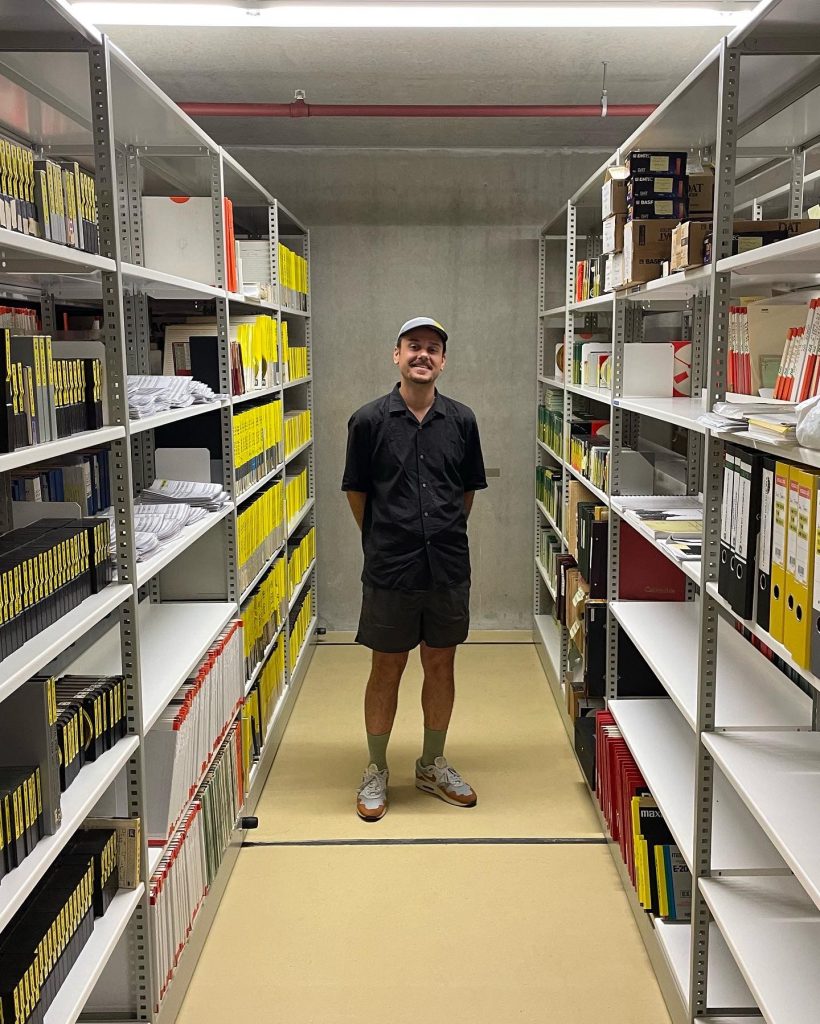From October 3 until October 9 at Sound & Vision in Hilversum a newly commissioned RE:VIVE installation If you understand the beginning well, the end will not trouble you, composed by Michiel Sekan will be available for you to visit for free.
As part of Dutch Media Week 2022, RE:VIVE was invited to commission an installation that addresses the theme of “On/Off”. Most of us are constantly “on”; online, on-guard, on our way, on call etc. and whether that be actively or passively – the act of turning “off” is becoming more elusive. With regards to the Sound & Vision collection and RE:VIVE’s work of reusing audiovisual heritage, Sekan is our first foray into working with the physical object collection. Specifically, two Telefunken M15 tape machines, former industry standard workhorses that remain prized for those “in the know”. The installation, presented in collaboration with Willem Twee Studios in Den Bosch and supported by DMW, is a call for visitors to sit down and immerse one’s self in the evolving loops and a call for makers to consider working outside the digital world.
The installation features 7 unique loops composed and cut by Michiel Sekan, founder of Jiwa Jiwa Records, DJ, digger, and now composer. Sekan was provided access to hours of archival field recordings from Indonesia from the collection originally held by the Royal Tropical Institute of The Netherlands. Being of Indonesian and Dutch descent, with Jiwa Jiwa, Sekan has enlightened countless listeners to the depth of music and culture coming from the archipelago. He serves as an activist and advocate, bringing awareness to the nation’s colonial past and their position in society as immigrants here in The Netherlands.
Each loop captivates a different emotion. Musical field recordings are supported by natural recordings from Indonesia from Sekan’s personal collection plus his own guitar work and synth, organ and processing captured at Willem Twee Studios.
Everyday a different loop will be running. Each machine is playing the same loop but due to the machine’s own imperfections, the loops will come in and out phase; an aural representation of Sekan’s mixed heritage. While he at certain points feels more connected to one over the other, but that has no clear distinction or timing which, in turn, creates something new. Just as the loops are creating something new while they run simultaneously, they will also disintegrate over time and even break; serving as a physical and audible illustration of the erosion of cultural identity; something that was instigated by Dutch colonization of the archipelago for more than 3 centuries. This installation is an exercise in creating something positive from the negative.
Much of history is aural history, which means for millennia, it was intangible; lost to time and the wind. Even today, history is shared through stories within families, never to be referenced in large archives. But once one can read between the lines, there is deeper knowledge to be gathered from what is in these institutions and traces of these oral histories can be found. However, those who control the archives, control the knowledge and power. The recordings used for this project are recorded by Dutch ethnomusicologists. But they did not credit the musicians who they recorded. So how can one grasp a musical piece to its full extent if the whole story and the stories of the people who created the music in the first place are not present in the collection? These musical pieces usually date back centuries and it’s important to understand the full picture and ensure that there is something to reference for the future generations of our diaspora.
The sounds created by these two machines together will be random but rooted in something familiar. They will evoke emotions for those who connect on a deeper level with these aural vibrations. These sounds are created to give a feeling of peace and homecoming, so that wherever you are, you will be able to reminisce. Just like smell can bring you back to a specific point in time, sounds can too.
